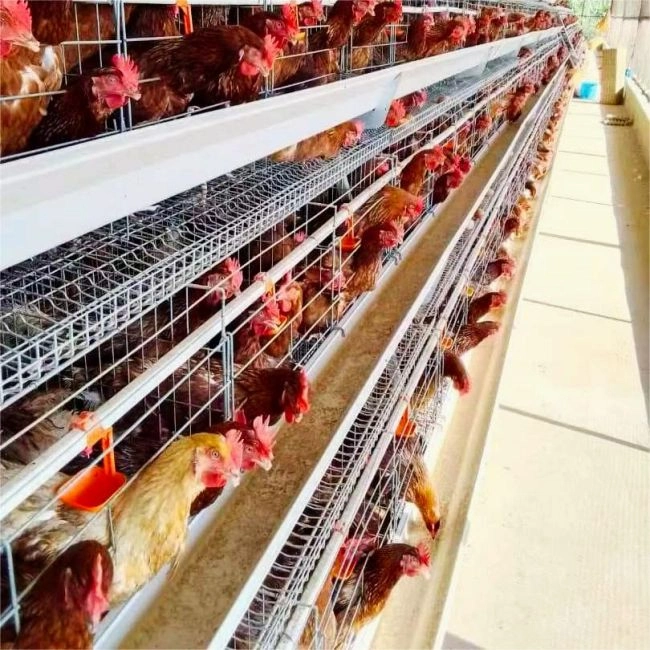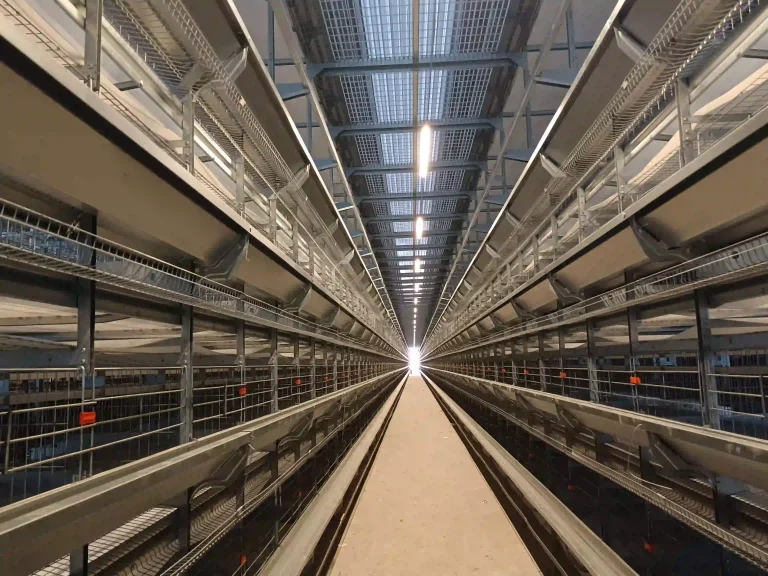Understanding Your Chicken-Keeping Plan and Scale
Assessing the Number of Chickens
Before you start building your chicken house, you need to find out how many chickens you want to have. This choice will directly impact the dimensions as well as the designs of your coop. For instance, H-type (stacked) poultry cages are appropriate for large-scale closed chicken production with a capacity of > 25,000 birds in one house. These systems are space-saving with more animals grown and this proves useful in large enterprises.
Determining the Purpose of the Coop
Before you start building that chicken coop you need to know why you want to build it at all. And there are specific designs that are needed whether for egg production or broiler raising. A-type Ladder Layer Chicken Breeding Equipment is available for laying hens and is adjustable in layers with 3-5 chickens per door.
Ensuring Adequate Size and Space
Chickens require a lot of space hence it is important. Birds should have 2-3 square feet of ground space to remain comfortable and stress-free. Without proper spacing, overcrowding may occur and it may become unhealthy and less productive. Adequate spacing reduces overcrowding causing diseases and lack of efficiency.
Guaranteeing Proper Ventilation
While ventilation in chicken coops is always an important factor in ensuring a healthy environment. With air outlets facing downdrafts based on local winds, the long axis of the chicken house should go north-south. By placing the water-heated system both above and in front within the 12 yards of the 18-yard the setup assures good airflow with little moisture and bad gases. This arrangement gives maximum flow of air which in turn takes of the moisture and the harmful gases.
Creating a Secure Environment
The main concern of any chicken coop is the structural or physical security of external forces of nature. The floor in the interior rooms should be paved concrete with a thickness of no less than 8cm and must be strong and easy to clean. The day inside must be going a concrete which the thickness is not lower 8cm as well as real, can also make cleaning easy.
Implementing Predator-Proof Measures
Predator-proofing your chicken coop involves using metal wire mesh to secure all openings. This measure prevents predators from accessing the coop while allowing adequate ventilation.
Providing Shade to Block Sunlight
Be sure that you provide some shade because chickens do need to stay out of the direct sunlight too especially when it is warm outside. Carefully designed rooves or shade cloth placed judiciously can keep the interior of the coop cool and comfortable. If you have a well-built roof or cloth to put up over them at a certain time they are prone to stay cool in a coop.
Setting Up Watering and Feeding Equipment
Automated systems like the stacked layer cage equipment guarantee that a feed will drop continuously on troughs for the hens to feast on, and the water lines are adjustable at diverse drinking heights. Stacked layer cage equipment has an automatic system, and this ensures feed is falling evenly on troughs that chickens can freely eat with the troughs on each floor in a certain setting and the water lines can also be adjusted by drinking height.
Utilizing Food Storage Containers
Utilizing appropriate food storage containers helps maintain feed quality and reduces waste. Containers should be durable, easy to clean, and capable of protecting feed from pests and moisture.
Selecting Suitable Flooring Options
One of the most important things when it comes to having your chickens nice and comfy in their chicken coops for years to come is the type of coop flooring you choose. The flooring should have the durability to resist cleaning, should be easy to clean, and should have appropriate drainage. Concrete floors are also a common type because they last long and are easy to clean. They also place a barrier that prevents any burrowing predators from entering the coop. But concrete floors must be covered with some sort of bedding, such as straw or wood shavings, to cushion chickens’ heals.
Offering Comfortable Nesting Areas
Nesting areas are essential for egg-laying hens as these large areas allow hens to feel comfortable and at peace laying eggs. There should be enough space inside each nesting box to allow one hen to rest inside. These boxes are best lined with soft bedding material to keep the eggs from breaking and keep the chickens warm when it is cold. Nesting boxes should be positioned such that access to and from is easy both for hens and for caretakers.
Implementing Diatomaceous Earth Usage
Diatomaceous earth (DE) is a natural product that can also be used for many purposes inside chicken coops. Dusting them in the bedding or the dust bath acts as a natural pest control for mites and lice. A soft, sandy dust bath can feel good to the chicken who can now engage in natural behaviours like dust bathing.
Controlling Temperature Effectively
Chicken stay healthy, and the temperature between (40 to 85) is best conducive for them. Climate control system can ensure the temperatures do not drop too low and must be monitored frequently so as not to overheat or cause flames. More critically, chickens must have access to shade and good ventilation when temperatures rise. Fans or misters can be installed to cool the air in the coop.
Providing Adequate Lighting
Apart from diet, lighting has a key influence on chickens’ laying cycles and health. Natural light from windows or clear translucent roofing panels can be adequate to provide light during longer day-length periods.
However, if utilizing artificial lighting systems, LED lights, as energy-efficient options as well with a longer lifespan and lower energy consumption, are suggested for humans. Start placing these lights at different points of the coop to ensure proper dispersal, but do not push the birds too hard with each light. These lights should be evenly spaced out throughout the coop to minimize stress on the birds.
Maintaining Regular Cleaning Practices
Regular cleaning practices are fundamental in maintaining a hygienic environment within the chicken coop. Establishing a consistent cleaning schedule helps prevent disease outbreaks by removing accumulated waste materials promptly. Choosing the right type of cleaning supplies that are safe to use around poultry will ensure complete disinfection without compromising the health of your flock. When cleaning surfaces within the coop, non-toxic disinfectants made for agricultural use work best.
Exploring Zeus Chicken Coops to Meet Your Needs
Zeus provides a fully customizable system that can be tailored to the specific needs of various poultry farming businesses, whether small or large. The system is designed to optimize the farming environment and maximize productivity. The coop is available in both H-type and A-type frame structures, allowing farmers to choose the configuration that best fits their operational requirements. The use of high-quality materials in the construction of cages ensures exceptional durability and stability, making them a long-term investment for intensive farming. Zeus chicken coop is a state-of-the-art poultry housing solution designed to meet the demands of modern poultry farming.





